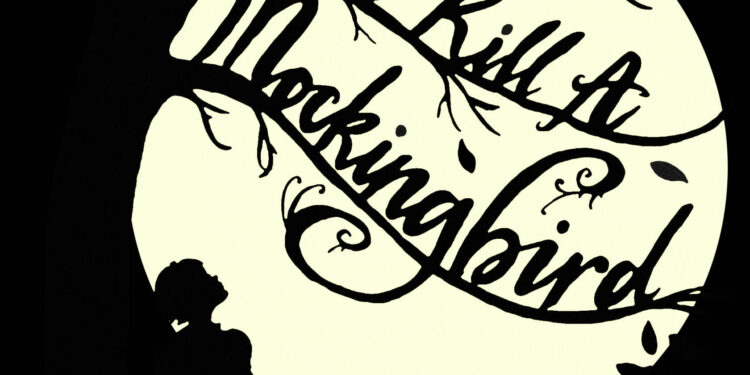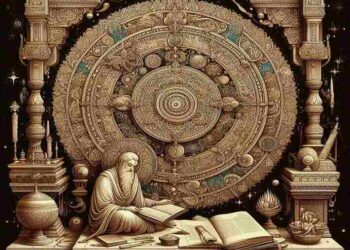Introduction
Understanding The Symbols In To Kill Mockingbird The literary classic To Kill a Mockingbird by Harper Lee examines the pervasive problems of racism, justice, and moral development.
The book, which is set in the Great Depression-era fictitious Alabaman town of Maycomb, follows young Scout Finch as she negotiates the intricacies of a discriminatory and unfair society. Lee’s use of symbolism to emphasize the main ideas and enhance the story is among To Kill a Mockingbird’s most captivating features.
Lee uses symbols like the mad dog, the Radley home, the mockingbird, and others to powerfully examine morality, innocence, and the social dynamics of race and class. To completely understand the profundity of the novel’s messages, it is essential to comprehend these symbols.
The Mockingbird: A Symbol of Innocence
Perhaps the most prominent and enduring symbol in To Kill a Mockingbird is the mockingbird itself. The mockingbird represents innocence, goodness, and purity, making it a symbol of the vulnerable members of society who are harmed by prejudice and injustice. In the novel, Atticus Finch, the moral backbone of the story, tells Scout and Jem that it is a sin to kill a mockingbird. This statement becomes a powerful metaphor for the moral wrongness of destroying innocence and goodness.
There are several characters in the novel who are symbolic mockingbirds, primarily Tom Robinson and Boo Radley. Tom Robinson, an African American man falsely accused of raping a white woman, represents the ultimate example of an innocent person destroyed by racial prejudice.
Despite his kindness and helpfulness, particularly in his relationship with Mayella Ewell, Tom is condemned simply because of the color of his skin. His trial and eventual death illustrate the deep-seated racism that pervades Maycomb society. Tom is an innocent man who is “killed” metaphorically by the judicial and societal systems that fail to protect him.
Similarly, Boo Radley, the mysterious and reclusive neighbor, is another figure who symbolizes the mockingbird. Boo is misunderstood and maligned by the town of Maycomb, often reduced to a figure of gossip and fear. However, as the story unfolds, Boo is revealed to be a compassionate and protective figure, someone who watches over Scout and Jem and ultimately saves them from harm.
Like the mockingbird, Boo represents innocence and the unjust suffering of those who are misunderstood or marginalized by society. The way that both Tom and Boo are “killed” symbolically by the community underscores the novel’s critique of societal injustices and the consequences of prejudice.
In analyzing the mockingbird symbol, it is important to consider how it serves as a critique of how society treats its most vulnerable members. Lee uses the mockingbird as a reminder that these innocent figures are often the ones who suffer the most under systems of racism and ignorance. The moral lesson embedded in the symbol is that true justice requires the protection of those who are unable to defend themselves.
The Radley House: A Symbol of Fear and Misunderstanding
The Radley house is another key symbol in To Kill a Mockingbird. At the start of the novel, the Radley house is shrouded in mystery and fear. It is the subject of local gossip, and children like Scout, Jem, and Dill create wild stories about Boo Radley, who they believe lives inside. The house is described as dark, eerie, and almost haunted, which reflects the way that Boo is perceived by the community.
The Radley house symbolizes the fear of the unknown and the tendency of people to judge and demonize what they do not understand. Boo Radley, much like his house, is a figure of mystery and isolation. He is a recluse, and the rumors surrounding him reflect the town’s deep-seated prejudice and inability to accept those who are different. The house itself is a physical manifestation of Boo’s isolation and the way he is pushed to the margins of society.
However, as the novel progresses, we see that the Radley house, like Boo himself, is not as frightening or sinister as it initially seems. As Scout and Jem begin to understand Boo more, the house transforms from a symbol of fear into a symbol of refuge and protection. When Boo finally emerges from the shadows to protect Scout and Jem, the Radley house no longer represents danger, but a place where kindness and compassion reside, even if hidden away from public view. In this sense, the Radley house becomes a symbol of how society often misjudges and fears what it does not understand.
The symbolism of the Radley house also connects to the themes of innocence and prejudice. Just as Boo is misunderstood, so too are those who do not conform to societal expectations. The Radley house invites readers to question how fear and ignorance can shape perceptions and how those perceptions often lead to unjust treatment of others.
Read More :
The Mad Dog: A Symbol of the Rampant Racism in Maycomb
Another important symbol in To Kill a Mockingbird is the mad dog that appears in Chapter 10. The dog, which is rabid and uncontrollable, is shot by Atticus Finch, much to the surprise of his children. At first glance, the mad dog seems to be an isolated event, but it serves as a powerful symbol for the deeply ingrained racism and fear that infects Maycomb society.
The mad dog can be seen as a metaphor for the disease of prejudice that spreads throughout the community. Just as the dog becomes sick and dangerous, so too does racism corrupt the minds of individuals, leading to irrational behavior and violence. The dog represents the way that hatred and bigotry can fester in a society, often in ways that are invisible until they explode in destructive ways.
Atticus’s act of shooting the dog symbolizes his role as the moral defender in the story, someone who stands up against the dangerous forces of racism, even when it is uncomfortable or unpopular. In this sense, the mad dog represents not only the sickness of prejudice but also the need for individuals to confront it head-on, as Atticus does during Tom Robinson’s trial.
The mad dog scene also reflects the way that issues of racism and injustice often remain hidden in plain sight until they erupt in violence. Just as the mad dog poses a sudden and unexpected threat, so too does the eruption of racial violence in the town, particularly surrounding Tom’s trial. The mad dog serves as a reminder of how dangerous and pervasive societal injustices can be when left unchecked.
The Camellia Flowers: A Symbol of Forgiveness and Understanding
The camellia flowers that Mrs. Dubose gives to Jem after his punishment serve as another important symbol in the novel. Mrs. Dubose is a cantankerous old woman who represents the deep-seated racism and bitterness in Maycomb. However, her character undergoes a transformation in the novel, as she battles addiction and strives to overcome it before her death.
The camellia flowers, which Jem receives as a sign of Mrs. Dubose’s respect for his efforts, symbolize forgiveness, growth, and understanding. Mrs. Dubose, despite her flaws and prejudices, represents a person who, in her final moments, is trying to overcome her personal demons. The camellias are a reminder that individuals, no matter how flawed or prejudiced they may be, have the potential for growth and redemption.
In the broader context of the novel, the camellia flowers symbolize the complex nature of human beings. Throughout To Kill a Mockingbird, Lee emphasizes that people cannot be easily categorized as good or bad. Instead, they are shaped by their circumstances, beliefs, and personal struggles. The camellias represent the possibility of understanding others and the importance of empathy in overcoming prejudice.
The Mockingbird and the Moral Evolution of Scout and Jem
As Scout and Jem mature over the course of the novel, they begin to understand the significance of the mockingbird symbol and its implications for their own moral development. At the start of the novel, both Scout and Jem are naïve and unaware of the complexities of racism and injustice. However, through their experiences with Tom Robinson’s trial, their growing understanding of Boo Radley, and their encounters with figures like Mrs. Dubose, they begin to see the world in more nuanced ways.
The mockingbird symbol becomes a reflection of their journey from innocence to a more mature understanding of the world. Just as the mockingbird represents the destruction of innocence, Scout and Jem’s experiences represent their gradual loss of innocence and the development of their moral compass. In the end, they learn the importance of protecting those who are vulnerable and the need for compassion, empathy, and justice in the face of prejudice.

Conclusion
In conclusion, To Kill a Mockingbird employs a range of symbols to enhance its examination of human nature, morality, and prejudice. Lee uses the mad dog, the Radley home, the mockingbird, and the camellia blooms as potent metaphors to illustrate key ideas about prejudice, innocence, and the complexity of people.
In addition to enhancing the novel’s themes, these symbols help readers comprehend the characters and their moral development on a deeper level. We can better understand the novel’s themes and the enduring significance of its examination of social justice and the human condition by dissecting these symbols.
In the end, To Kill a Mockingbird’s symbolism serve as a reminder that the struggle for equality and justice is never-ending and that we must all work to defend the weak and against prejudice in all of its manifestations. The novel’s lasting impact comes from its capacity to include readers in this ethical dialogue and use metaphor to elicit reflection, debate, and, eventually, change.
















